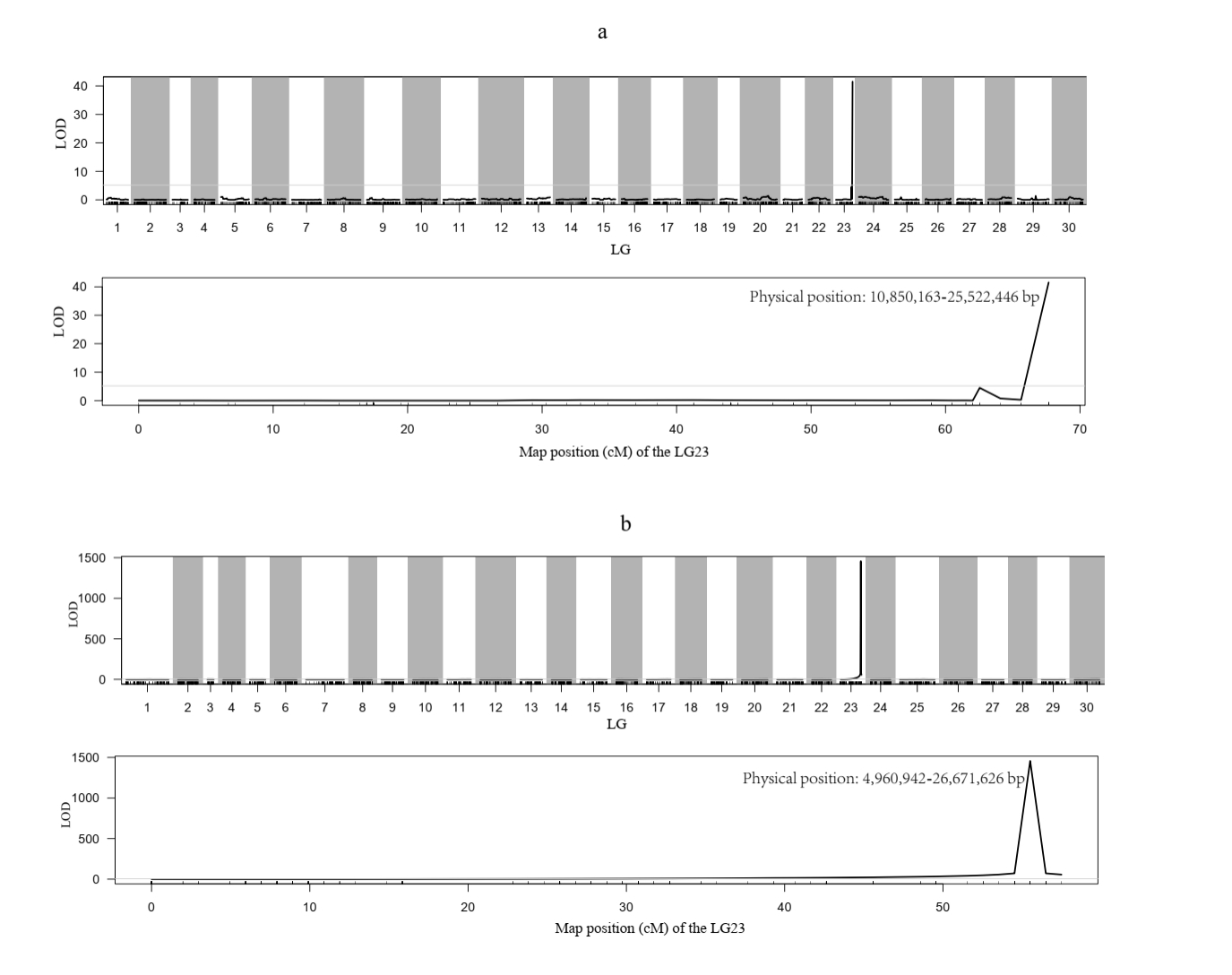Study Identifies Genomic Region Linked with Sex Determination of Undaria pinnatifida
Undaria pinnatifida is the second most economically important brown macroalga in China. Different from the classical knowledge about kelp, there are three sexual phenotypes (female, male, and monoicous) in the haploid gametophytes of U. pinnatifida. However, the sex-determining mechanisms remain unknown.
Recently, the research team led by Prof. PANG Shaojun from the Institute of Oceanology of the Chinese Academy of Sciences identified a genomic region linked with sex determination of Undaria pinnatifida through genomic resequencing and genetic linkage analyses of a segregating gametophyte family.
The study was published in Journal of Phycology on Nov. 4.
Researchers established a segregating gametophyte family that was derived from meiosis of a hybrid sporophyte between a monoicous gametophyte clonal line (male role) and a female one. They re-sequenced the family based on the male genome of U. pinnatifida and constructed a high-density genetic linkage map using 9,887 Single Nucleotide Polymorphisms (SNPs), with an average distance of 0.41 cM between adjacent SNPs. They found 62 SNPs tightly linked with the sex phenotype based on the genetic map and these SNPs were at a position of 67.67 cM on the linkage group 23, corresponding to a physical range of 14.67 Mbp on the chromosome 23.
Researchers also reanalyzed the previous specific length amplified fragment sequencing data according to the reference genome and identified a sex-linked genomic region that contained the above-mentioned 14.67 Mbp region. Thus, they predict that this overlapped genomic range is the sex-determining region. They found 129 genes within this region, including the candidate male sex-determining gene encoding the high mobility group (HMG) domain protein. They found that the HMG gene was expressed higher in vegetative male gametophytes, and in both the vegetative and gametogenesis phases of monoicous gametophytes, but significantly lower in the gametogenesis phase of male gametophytes.
"Now we are sequencing the genomes of female and monoicous sex. Once finished, we can compare the genomic difference of three different sexual phenotypes," said Prof. SHAN Tifeng, first author of the study.
"This study lays a foundation for further deciphering the molecular mechanism of different sexual phenotypes in U. pinnatifida," said Prof. PANG, the corresponding author.

Sex-linked regions of Undaria pinnatifida identified by the QTL mapping approach based on re-sequencing of a segregating gametophyte family (a) and reanalysis of the previous SLAF data according to the reference genome (b).
Tifeng Shan, Yuqian Li, Shaojun Pang. (2022). Identification of a genomic region linked with sex determination of Undaria pinnatifida (Alariaceae) through genomic resequencing and genetic linkage analyses of a segregating gametophyte family. Journal of Phycology.
(Text by SHAN Tifeng & PANG Shaojun)
Media Contact:
ZHANG Yiyi
Institute of Oceanology
E-mail: zhangyiyi@qdio.ac.cn
(Editor: ZHANG Yiyi)